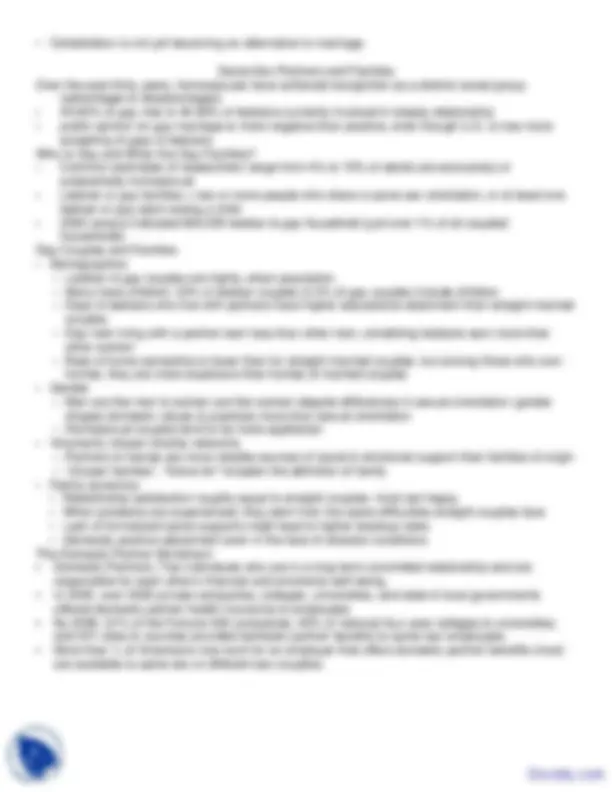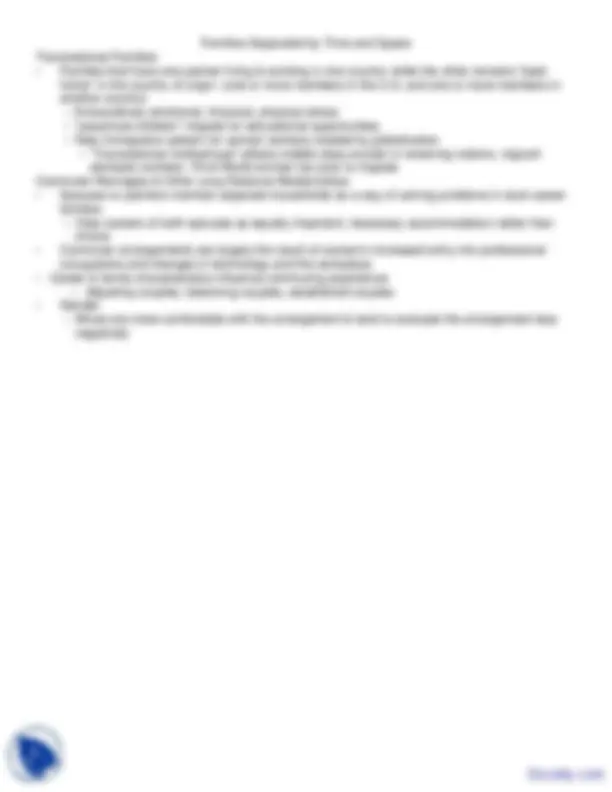
Emergent Families in the Global Era
The Rise in New Family Arrangements
Families in Transition
• Distinction between household & family; all families comprise households, but not all households
are families
• The percentage of the U.S. population in family households declined from 85 percent of all
households in 1960 to 68 percent in 2003.
• Nonfamily households (a very diverse group) have increased significantly over the last 40 years
• Fastest growth among persons living alone (doubled from 13% in 1960 to 26% in 2000)
• Another major change is a decline in the percentage of households with children
• currently less than ¼ of households made up of married couples with children; change is
result of later age at marriage & shift toward smaller families; higher proportion of minority
households with children because of age structure & fertility rate
Global Trends, Individual Options, & the Decline of Marriage
• Five global trends in family formation:
• Women’s age of first marriage and first birth has risen, delaying the formation of families.
• Families and households are smaller.
• The rate of female-headed households has increased.
• Working-age parents are increasingly supporting older and younger dependents.
• Women’s labor force participation has increased while men’s has decreased, shifting the
balance of economic responsibility in families.
• Marriage is less central in organizing & controlling life transitions, individual identities, intimate
relations, living arrangements, childbearing, childrearing
• Declining proportions of adults are married; nonmarriage has increased in last three decades
(from 28% of adults in 1970 to 41.4% in 2004)
How to Think about Family Diversification
• Rethinking family categories
• New family types are no more “alternative” to what had preceded them than the 1950s
(traditional) type was to its historical predecessors
• More useful to think of all family forms in their own right with no family structure better than the
others
• The question of life styles
• Social & economic forces in society produce & require diversity in family life; what may seem
like “new lifestyles” of young mainstream elite are the same lifestyles that have previously been
defined as pathological, deviant, or unacceptable.
• Singlehood, heterosexual & homosexual cohabitation, & families separated by time & space
represent adaptations to particular social arrangements & to the times in which we are living
Single Life
“Single” refers to the never married, the divorced, the separated, and the widowed.
• Living alone has increased in all age groups (26% of population)
• 58% are women, 42% are men (faster increase among men)
• Now as many single households as households of married couples with children
• Approximately 10% of young men & women will never marry
The Singles Population
• Very diverse based on age, race, ethnicity, education, occupation, income, parental status,
marital status
• Voluntary stable singles: never married & satisfied, have been married but don’t want to remarry,
cohabitors who don’t intend to marry, lifestyles preclude the possibility of marriage
• Account for most of the increase in singles population












